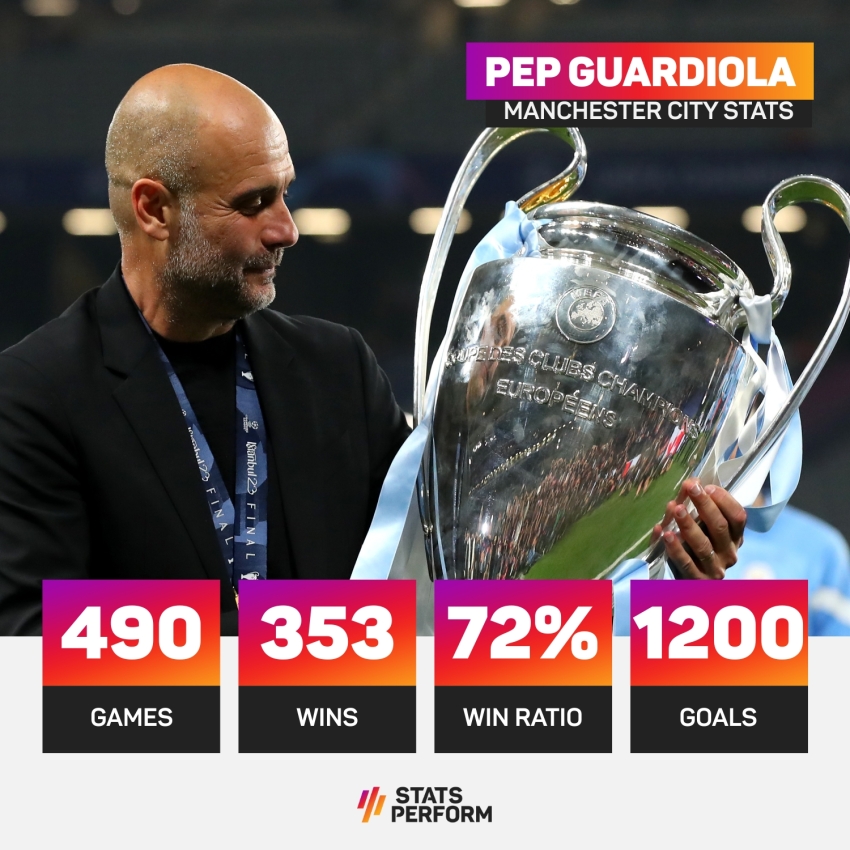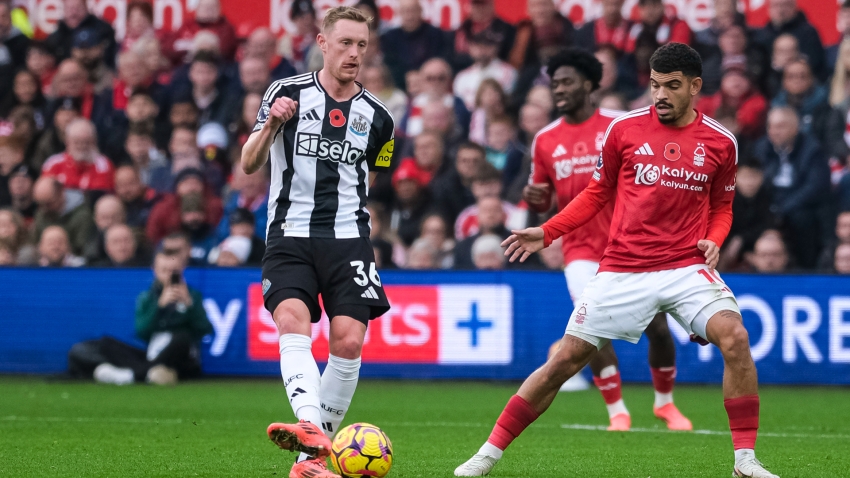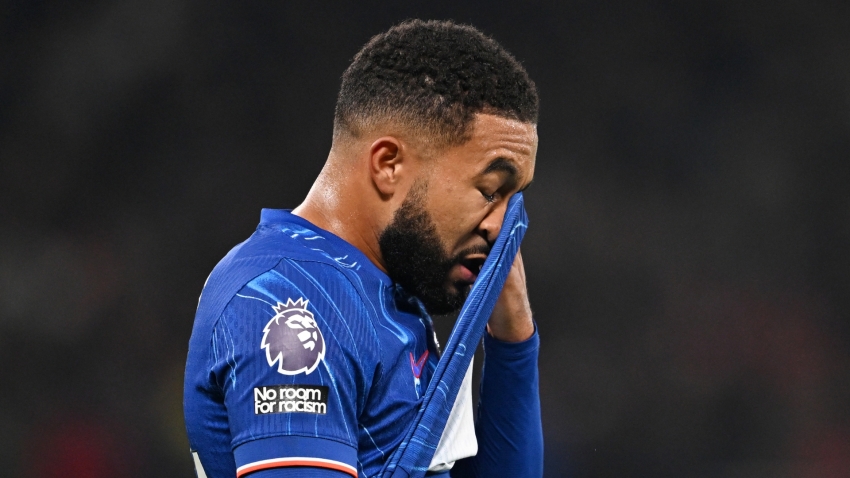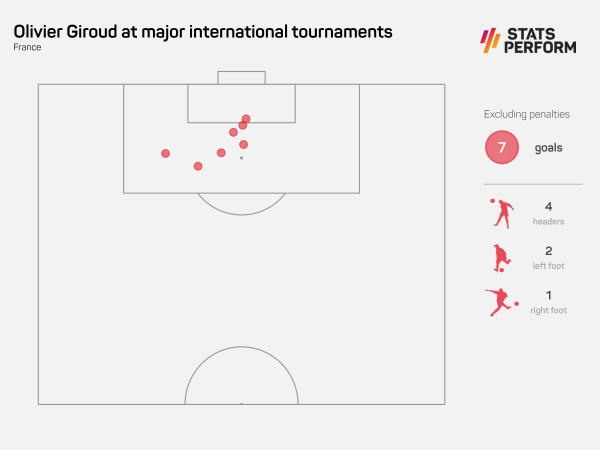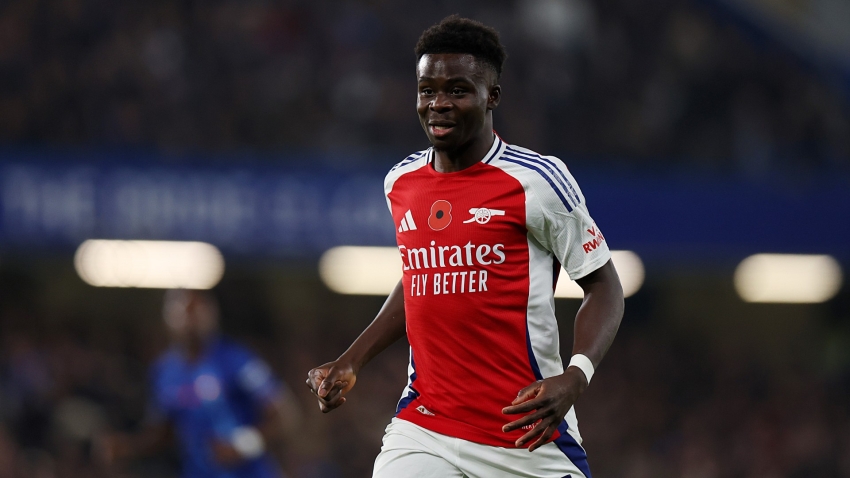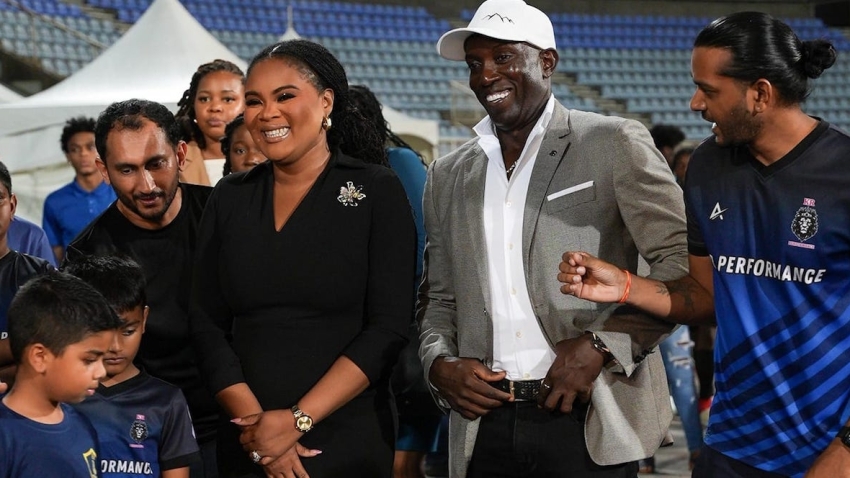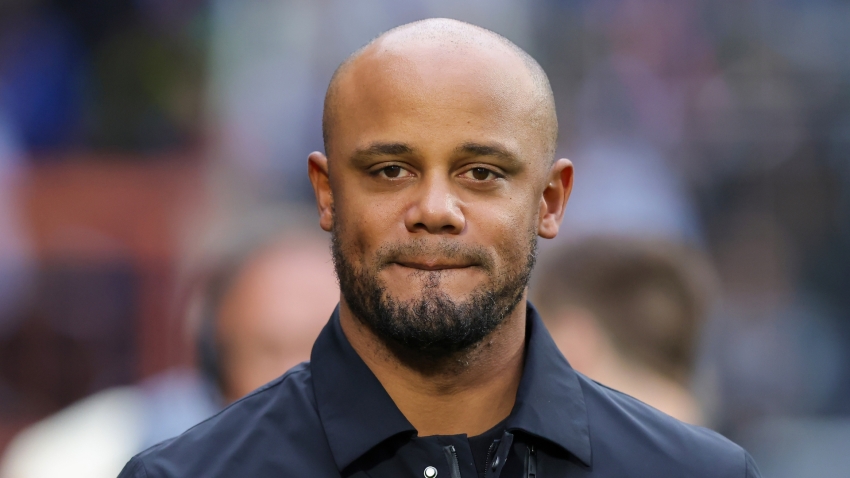Football goes through phases and cycles where certain trends dictate the sport, whether that's specific formations and systems, or particular player styles.
The World Cup quarter-final between France and England will highlight one such feature of the modern game: the evolution of the striker.
What makes this clash so intriguing in that respect is the presence of three forwards who each represent a different era, with Olivier Giroud, Harry Kane and Kylian Mbappe likely to attract much of the pre-match focus.
And what's more, there's a strong possibility the game will be decided – or influenced at the very least – by this trio.
Giroud – The throwback
For years the narrative around Giroud has been the suggestion he's "underrated". That discussion has been exhausted to the extent we should all now agree he is simply "rated".
That shouldn't detract from how he's polarised opinion for much of his career, but for the most part this comes down to personal preferences about what a striker should offer or be.
Arsene Wenger, the man who signed Giroud for Arsenal, said it best in 2014 after the striker scored a powerful header in a 4-1 win over Newcastle United: "He is like an English [-style] centre-forward. His first goal he scored was a typical 1970s goal. You saw those headers in the seventies and eighties. You love it because you see it less now."
Fast-forward eight years and Giroud is now France's all-time leading scorer after usurping another former Arsenal star in Thierry Henry.
But as Wenger alluded to, he's almost part of a dying breed.
Since the start of Giroud's breakout season in 2011-12 when he led Montpellier to the Ligue 1 title, only five players have scored more headed goals than him (34) across the top five leagues – that accounts for 28.3 per cent of his non-penalty goals.
While 27 players (minimum 40 goals total) in that time have scored a greater proportion of their non-penalty goals with headers, only one of those – Anthony Modeste (61) – has also netted more than 50 non-headers. Giroud has 86.
This speaks to Giroud's quality as not only a seventies throwback who'll get his head on almost anything, but just generally a reliable penalty-box striker, with his exploits in Qatar a rather succinct summary.
All three of his goals have been scored in the area, and one of those – his second against Australia – was a towering header.
Let's not forget, he was maligned at Russia 2018 because some deemed him to not be a scoring threat. Granted, he ended the tournament with no goals, yet he was a regular throughout the champions' run because of the physical presence he brought working as a kind of attacking pivot.
Four years on, despite looking a likely exclusion this time around, he's thriving in the absence of Karim Benzema.
'Classic' number nines like Giroud aren't particularly fashionable these days. How many of the best developing forwards under the age of 25 come under this umbrella? Not many.
But Giroud proves this sub-genre of striker retains relevancy even if the production line is drying up.
Kane – The playmaker
Kane does share certain strengths with Giroud – after all, he is one of those five strikers to score more headers (35 to 34) in the top five leagues than Giroud over aforementioned period.
But it's fair to say he's a more rounded, refined striker, which of course tallies with the idea of he and Giroud being of different eras in essence.
Jose Mourinho may not have been hugely popular as Tottenham coach, but to his credit, he clearly played a part in Kane redefining himself somewhat.
In November 2020, Kane said: "I think [Mourinho] saw in my game that I like to drop deep so he made it clear to the others that if I do drop deep then they need to be the ones running in behind. I think that's been the real difference. It's allowed me to create space and get the ball but have an option going forward as well. But I think obviously I've still been playing as a nine as well, and I think that's the beauty of what's been working well."
Since Mourinho replaced Mauricio Pochettino 12 months prior to those comments, Kane has averaged 0.24 assists per 90 minutes in the Premier League, double the frequency he had under the Argentinian.
His other creative metrics haven't improved quite as dramatically, with key passes only up from 1.2 to 1.4, for instance. However, his expected assists increase (0.08 per 90, to 0.13 p90) highlights how Kane's general creativity carries greater threat now. Sure, it would seem he's benefiting from good finishing by team-mates, but his playmaking influence has demonstrably grown.
Since the start of the 2019-20 season, only Mohamed Salah (747), Bruno Fernandes (641) and Jack Grealish (588) have been involved in more shot-ending sequences in the Premier League than Kane (585), with 289 of those not ending with him having the shot – no out-and-out striker has been more involved in build-up play than Kane.
He's translated that to the World Cup as well. Twelve Opta-defined "strikers" can better his 11 open-play shot-ending sequence involvements, but among them are the likes of Lionel Messi, Memphis Depay and Thomas Muller; players not always picked to lead the line.
No forwards have recorded more involvements in goal-ending sequences than Kane (four), however, with the Spurs star becoming the first England player since David Beckham in 2002 to have three assists at a single World Cup.
Another Golden Boot success might not be on the cards, but you could argue Kane is more integral to England than ever before.
Mbappe – The wide forward
While Kane and Giroud might almost be deemed old-fashioned in some regards, Mbappe represents the archetypal modern forward – and he's essentially the perfect embodiment.
While it's not just 'emerging' players who qualify here, there certainly appears to be a greater concentration of them among a particular age group. So many have similar key characteristics in that they're generally quick, good on the ball and often prefer to play off one of the flanks.
The 'wide forward' role is very much in vogue.
What makes this particularly interesting in relation to Mbappe is that his playing role was apparently a major contributing factor in his reported unhappiness at PSG earlier this season.
While he didn't explicitly confirm that, he outlined what was different between representing France and PSG, where Christophe Galtier has this season often used him as a central striker.
"I play differently for France. I am asked other things [with the national team] compared to my club," he said in September. "I have a lot more freedom here. The coach knows there is a number nine in the side like Olivier [Giroud] who can occupy defences while I walk around and go into space. In Paris, it's different – you don't have that. I am asked to play as a pivot, which is different."
That said, Mbappe's still been able to tally the seventh-most carries (259) across the top five leagues this term, and his total carry progress of 1,562.2 metres is bettered by only Gerard Deulofeu among wingers and forwards, highlighting the fact the France talisman continues to play a vital role in getting PSG up the pitch and on the front foot.
It's a similar story at the World Cup, with his 70 carries fourth behind Lionel Messi (104), Christian Pulisic and Jamal Musiala (both 75) among forwards and wingers.
Clearly, Mbappe's good enough to play either as wide forward or central striker and still thrive. But, as he said in September, it's the freedom offered by the former role that he appears to value, and it certainly doesn't seem to have diminished his effectiveness massively in the box given he's had a hand in seven goals – three more than anyone else – and leads the scoring charts with five.
Understandably, he'll be the one to watch on Saturday. But as Giroud and Kane have already shown at this tournament, you don't have to be explosive to be decisive.









